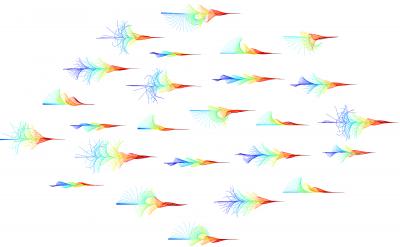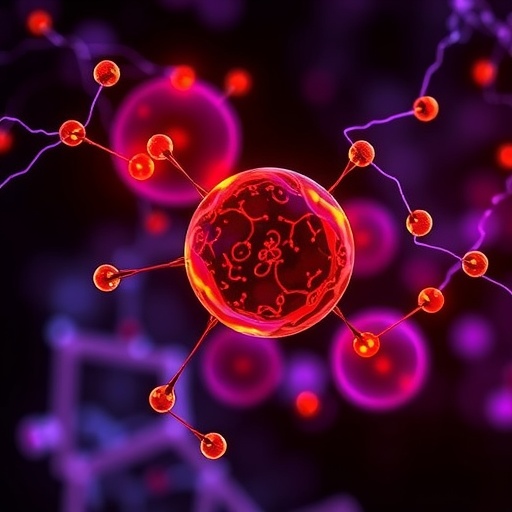
Credit: João Marques
In order to survive in a changing environment, animals and humans must integrate sensory information and their experience to select the most appropriate behavior for a given situation. This process is ultimately constrained by the range of possible motor outputs they can produce.
But two very different scenarios could be at work for constructing these movements, and this has generated some debate among experts. It might be the case that the brain can produce any arbitrary movement, or alternatively it might have to select from a predefined set of types of movements. Understanding these constraints is crucial because they reflect how the neurons in the brain that control behavior work.
Up to now, it had been difficult to experimentally disentangle the two possible motor behavior scenarios – continuous range of movements versus discrete movement components -, as some behaviors may only occur under very specific conditions, or movement differences may reflect structure in the stimulus, not the motor output.
Now, in a new study, which will be published on January 22nd 2018 in the journal Current Biology, a team of neuroscientists from the Champalimaud Centre for the Unknown, in Lisbon, Portugal, analysed the movements of zebrafish larvae with the help of a novel computer program to test whether the second scenario – motor behavior sequences being constructed out of "Lego pieces", as it were – actually accounted for these animals' behaviors.
"Our goal was to find, for one species, what is its repertoire of movement and how simpler movements are used in sequences to produce more complex ones", says João Marques, first author of the study.
Using a method developed in their lab for tracking the fish with very high spatial and temporal resolution as they swim, the scientists recorded millions of individual movements from thousands of individual fish during different behaviors, such as feeding or interacting with each other. "By measuring behavior across so many animals and contexts we can be confident that we sampled most of the possible types of movements these animals can execute", says Marques.
The team, led by Michael Orger, also developed a computer system that automatically – and therefore in an unbiased way – measures the behavior of zebrafish larvae in many different situations. "Since it was not known how many types of movements these animals use, and we wanted to make this judgement without imposing human biases, we created a computational algorithm that identifies movement types, and applied it to our data", Marques explains.
In this way, the team was able to reveal that zebrafish larvae use 13 different patterns of movement that they combine, when they swim, to respond to different situations. "The striking thing", adds Marques, "is that an unbiased computational approach can be used to identify different types of movements and reveal novel features of behavior that are not obvious from human observation. Much like music is made of notes, complex behaviours, such as hunting or social interactions, are formed from a small set of movements types arranged in specific sequences."
To summarize: by using an objective computational method that corrected biases across conditions to score behavior, and by measuring behavior in a wide range of situations, the team found that, at least for the zebrafish larvae, behaviours are composed of a set of simple movements that are combined flexibly across different behavioural contexts.
The scientists further point out that the method they created for this study may be adapted to be used in other animal species, including humans. "This will make it possible to discover if other species also have basic sets of movements and, if that is the case, to identify their particular movement repertoires", says Marques.
The knowledge of the types of movements that zebrafish execute will be critical to identifying the circuits and neural mechanisms that underlie their behavior. "Knowing the set of basic movements these animals do enables us to break down complex behaviours into easy to understand sequences of simple movements", the authors say.
Learning how these motor systems work may help guide the design of moving robots. Also, zebrafish are increasingly used as a model system to study mechanisms of neurological disease in humans. They have a brain architecture that shares many conserved features with humans and other vertebrates, and at the same time a brain that is a million times smaller, so its neural circuits are much more experimentally accessible.
Understanding how different movements are selected and executed in zebrafish and how this process is disrupted by disease can give insights into how similar processes happen in other animals or even humans. Ultimately, this may help to better understand and develop therapies to common neurological disorders that result from disruptions in these motor systems.
###
Media Contact
Maria João Soares
[email protected]
http://www.fchampalimaud.org/
Related Journal Article
http://dx.doi.org/10.1016/j.cub.2017.12.002





